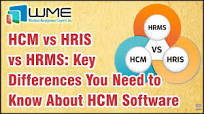“`html
The Importance of Human Capital Management in Today’s Business Environment
Human capital management (HCM) plays a crucial role in the success of organizations in today’s competitive business landscape. It encompasses the practices and strategies that businesses employ to effectively manage their workforce, optimize employee performance, and drive overall organizational growth.
Strategic Talent Acquisition
Effective HCM starts with strategic talent acquisition. Organizations must attract, recruit, and retain top talent to ensure a skilled and motivated workforce. By investing in recruitment processes that align with the company’s goals and values, businesses can secure employees who are not only qualified but also culturally fit for the organization.
Employee Development and Training
Ongoing employee development and training are essential components of HCM. By providing opportunities for professional growth and skill enhancement, organizations can empower their employees to reach their full potential. This leads to increased job satisfaction, higher employee engagement, and improved retention rates.
Performance Management
Performance management is another critical aspect of HCM. By setting clear performance expectations, providing regular feedback, and offering recognition for achievements, organizations can motivate employees to perform at their best. Effective performance management processes help identify areas for improvement and facilitate career development opportunities.
Workforce Planning and Succession Management
HCM also involves workforce planning and succession management. By forecasting future talent needs based on business objectives, organizations can proactively address gaps in skills or leadership positions. Succession planning ensures a smooth transition of key roles within the organization, reducing disruptions and maintaining operational continuity.
Cultural Alignment
Lastly, cultural alignment is vital for successful HCM. Organizations that foster a positive work culture built on trust, collaboration, and inclusivity tend to have higher employee morale and productivity levels. A strong organizational culture reinforces shared values and goals among employees, driving motivation and commitment to the company’s mission.
In conclusion, human capital management is a multifaceted discipline that directly impacts an organization’s performance and competitiveness. By prioritizing strategic talent acquisition, employee development, performance management, workforce planning, succession management, and cultural alignment, businesses can cultivate a high-performing workforce capable of driving sustainable growth in today’s dynamic business environment.
“`
Understanding Human Capital Management: Types, Functions, and Key Differences from HR
- What are the four types of Human Capital Management?
- What is Human Capital Management?
- What are the 7 functions of Human Capital Management?
- What is the difference between HR and HCM?
What are the four types of Human Capital Management?
“`html
When it comes to Human Capital Management (HCM), there are four primary types that organizations focus on to maximize the potential of their workforce. The first type is Strategic HCM, which involves aligning human resource strategies with overall business goals to drive organizational success. Next, Operational HCM focuses on day-to-day HR activities such as recruitment, training, and performance management to ensure smooth workforce operations. Talent HCM emphasizes attracting, developing, and retaining top talent within the organization to build a skilled and engaged workforce. Lastly, Analytical HCM utilizes data and metrics to make informed decisions regarding human capital investments and performance optimization. By understanding and leveraging these four types of HCM effectively, organizations can enhance productivity, employee satisfaction, and overall business performance.
“`
What is Human Capital Management?
“`html
Human Capital Management (HCM) refers to the strategic approach that organizations take to effectively manage their workforce as a valuable asset. It encompasses the processes, practices, and systems used to recruit, develop, retain, and optimize the performance of employees. HCM goes beyond traditional HR functions by focusing on aligning human resource initiatives with business goals to drive organizational success. By investing in the development and well-being of employees, organizations can enhance productivity, innovation, and overall performance while fostering a positive work culture conducive to growth and success.
“`
What are the 7 functions of Human Capital Management?
“`html
Human Capital Management (HCM) encompasses seven key functions that are essential for optimizing workforce performance and driving organizational success. These functions include strategic talent acquisition, employee development and training, performance management, workforce planning, succession management, organizational culture development, and employee engagement. Each function plays a critical role in managing the human resources of an organization effectively, from attracting top talent to fostering a positive work environment that promotes growth and productivity. By integrating these functions into their HCM strategies, businesses can build a strong foundation for maximizing the potential of their workforce and achieving sustainable growth.
“`
What is the difference between HR and HCM?
“`html
One frequently asked question in the field of human capital management is the difference between HR (Human Resources) and HCM (Human Capital Management). While HR traditionally focuses on administrative tasks such as payroll, benefits administration, and compliance with employment laws, HCM takes a more strategic approach to managing employees as valuable assets. HCM encompasses a broader scope that includes talent acquisition, employee development, performance management, workforce planning, and organizational culture alignment. Unlike HR, which tends to be more transactional in nature, HCM emphasizes the strategic optimization of human resources to drive organizational success and growth in today’s competitive business environment.
“`

